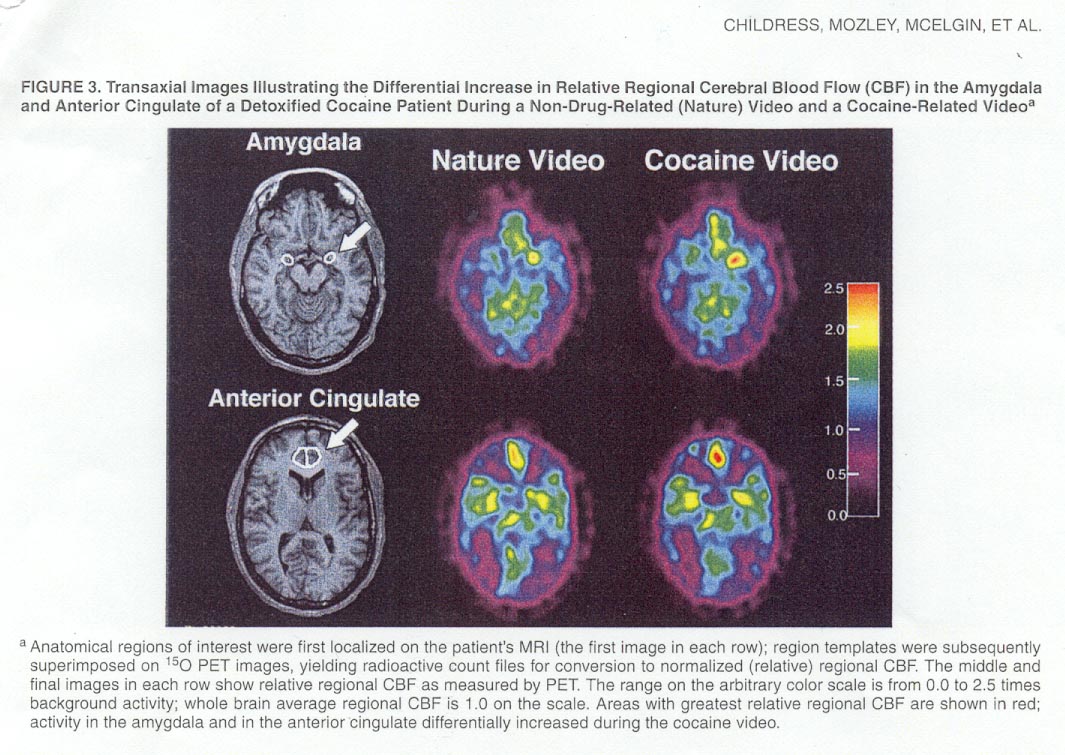Physiological Evidence of Drug Addiction
Limbic System and Cocaine
As was stated in pathology portion of our web page, the limbic system is
affected during drug use. Anna Rose Childress
et
al. have shown that the limbic system is activated when cocaine
craving is induced by environmental cues. As was stated in the psychology
portion of our web page, cocaine addicted individuals experience cravings
when they encounter cues such as people, places, or paraphernalia associated
with cocaine. In fact just the exposure to these stimuli can elicit
similar effects in a person to the effects of cocaine, such as generalized
arousal, palpitations, light-headedness, ear ringing, chest tightness,
the "taste" of cocaine in the back of the throat, and even euphoria.
Due to these effects, the scientists thought that the cocaine craving may
be activated by the same brain structures that are affected by cocaine.
Therefore, they tested the limbic system (the amygdala, anterior cingulate,
temporal pole, hippocampus, and orbitofrontal cortex) to see whether it
is activated during environmental cue stimulation. Their subjects
were male cocaine abusers who were involved in a treatment program.
The subjects were shown two videos: a cocaine video and a nature video.
The cocaine video showed the purchase, preparation, and the actual smoking
of the crack cocaine. The cocaine patients reported cocaine craving,
high, and a wish for rush. The cocaine-naive subjects did not report
cocaine craving or cocaine associated responses. Through examining
the cerebral blood flow (CBF), it was found that limbic regions (amygdala
and anterior cingulate) of the detoxified cocaine addicted individuals
have a significant increase in regional CBF in response to the cocaine
video. The image below demonstrates their findings.

Home, Definition,
Development,
Pathology,
Psychology,
Sociology,
Treatment

